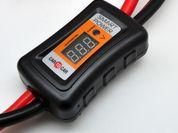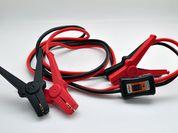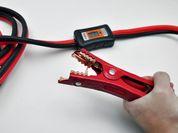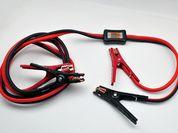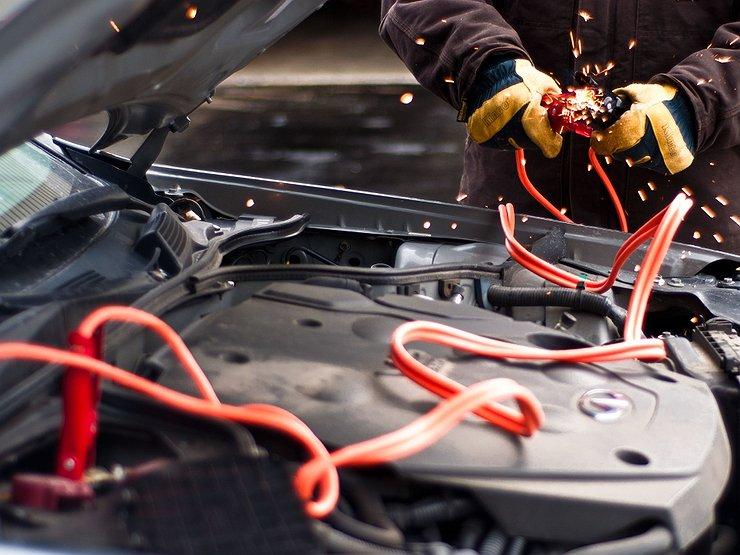
What wires can safely “light up” a car in winter
At least once in a lifetime, most car owners had to “light up” a neighbor’s car that refused to start, most likely. However, few of them suspect that such assistance may one day turn into subsequent problems in the electronics of their car. Especially if you use the wrong jumper wires.
“Lighting up” a fellow driver’s car in winter is a good thing. But good deeds, as we know, often “do not go unpunished.” The main danger in such a situation for the “rescuer” is problems with the electronics in his own car after the “lighting up” procedure is completed. Let us remember that during the Soviet era, Zhiguli cars were “lighted” like this. Another Zhiguli drove up to the car that refused to start. Its battery was connected to the battery of the car being started using homemade wires. The driver of the “rescue” pressed the gas pedal, maintaining engine speed in the region of 2000-3000 thousand per minute, while his colleague tried to start the car with a “dead” battery. This procedure did not create any technical problems for any of the participants, because the engines at that time were all carburetor engines, and the only electronic equipment available was, at best, a cassette tape recorder.
Now, in cars, literally all functions are “tied” to electronic components, in fact, small computers. And at the same time, many motorists “light up” their cars stuffed with electronics almost the same as they did 30 years ago. They are unaware that because of this, the electronics of the donor machine experiences powerful power surges - when the power grid of the auto-"receiver" of energy at the time of launch begins to literally "eat" it. The most unpleasant thing here is that these shock loads most often do not affect immediately, but after several "lighting up". And then the good-natured owner does not understand: why did the engine control unit of his "swallow" start to give out a bunch of "errors" or did the relay or the whole electronic unit fail? Therefore, if you have already decided to help your neighbor by “lighting up” the electrical system of his vehicle during start-up, it is better to use your own, pre-purchased starting wires.

Today, there are many jumper cables available on the automotive market. The main thing when choosing is to pay attention to such technical characteristics as length, maximum current, quality of insulation and the terminals themselves. For the “donor” car, it would also be a good addition to have a diagnostic module on the wires, for example, such as the one used by the Berkut brand in its Smart Power series. The block is needed, in particular, to control the electrical parameters of this process immediately before and during starting the motor. To do this, in addition to the “error” indication, the module of these wires also has a digital voltmeter, which displays the current voltage in the battery, indicating the condition of the battery.

The procedure for starting a car with a “dead” battery has another subtlety that few motorists think about. It is called - the effective cross section of the starting wires or, in a simple way, their thickness. The electrical resistance of the wire directly depends on the cross-sectional area and its length. The thinner the wire, the less power it can transmit from the donor machine without noticeable losses. This nuance is especially important when you have to “light up” a car with a multi-liter engine, and even more so with a diesel engine under the hood. To crank the crankshaft of such a unit, much more electricity is required than to start some fashionable three-cylinder gasoline engine with a working volume of 1 liter.
The BERKUT Smart Power SP-400 has a length of 3 meters, and a wire cross section of 16 mm², and it is designed for operating currents up to 400 Amps, which, in fact, is reflected in the name of these starting wires. For more energy-demanding start-up cases, there are Smart Power SP-500 wires. Here, as we can see, the allowable current is higher, 500 Amperes - due to the larger cross-section of the wire, the area of \u20b\u3,5bwhich is already 45 mm², and the length of these wires is XNUMX meters. This model is equipped with reinforced clamping terminals and more frost-resistant insulation down to -XNUMX °C.

In conclusion, it should be said that the correct algorithm for "lighting up" someone else's car is as follows. We connect the batteries of both machines with wires - “plus” to “plus”, “minus” to “minus”. We start the "donor" motor and recharge the dead battery for 10-15 minutes, controlling the electrical parameters of this process using a monitor on the block built into the starting wires. After this time, we turn off the engine of the donor car, thereby de-energizing all its electrical systems. And only after that we make an attempt to start the car with a dead battery.
Thanks to this technique, the electrical equipment of the rescue vehicle will not suffer from possible voltage and current surges at the time of starting the car engine with a “dead” battery.


